You can go all the way back to the 1527 exploration of Cabeza de Vaca and a Moor who accompanied him. Esteban de Dorantes was, by some accounts, the first African American to set foot in New Mexico, though other historians have traced the lineage as far back as 1050. Despite such a lengthy history, you don’t often hear the stories of New Mexico’s African Americans.
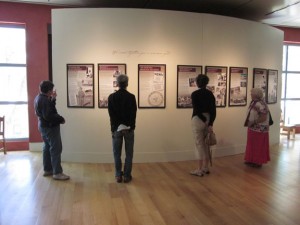 Enter The African American Legacy: Visible, Vital Valuable. The exhibition, produced by the African American Museum and Cultural Center of New Mexico took center stage at the History Museum today (May 15) and will be on display through Oct. 9.
Enter The African American Legacy: Visible, Vital Valuable. The exhibition, produced by the African American Museum and Cultural Center of New Mexico took center stage at the History Museum today (May 15) and will be on display through Oct. 9.
The exhibition focuses on the African American experience from the Civil War into the 1950s and includes the communities of Las Cruces, Albuquerque, and Blackdom, a short-lived African American community near Roswell in the early 1900s.
Rita Powdrell, president of the African American Museum, which is still working toward a physical building, invoked a West African term, Sankofa in her remarks at the exhibit’s opening. Its meaning is simple: Go and fetch it. Retrieve the past that you might learn from it. In researching different communities’ African American experience in New Mexico, Powdrell said, members of the museum board learned that it differed, one place to the next.
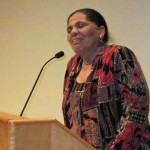 “But the thread that runs through our culture in every community is we have grace in the face of adversity,” she said. “We have love in the face of hate. We have perseverance and a deep and abiding sense of joy. We hope when you see the faces in this exhibit, they will speak to you.”
“But the thread that runs through our culture in every community is we have grace in the face of adversity,” she said. “We have love in the face of hate. We have perseverance and a deep and abiding sense of joy. We hope when you see the faces in this exhibit, they will speak to you.”
Other speakers at the opening included retired NMSU Professor Clarence Fielder, the original curator of the exhibition’s Las Cruces section; Gary Williams from the state Office of African American Affairs; and Brenda Dabney, a board member of the African American Museum who paid tribute to the historians on whose shoulders today’s African American researchers stand.
Told on a series of panels, the exhibition focuses on migration, families, churches, social organizations and entrepreneurs, along with the struggles against segregation.
 Among the people it features are Cedric and Merdest Billingsley Bradford (left), longtime operators of the U-Tote-Em Grocery Store in Las Cruces and community activists who devoted time to Planned Parenthood, the NAACP, and Las Cruces’ public schools.
Among the people it features are Cedric and Merdest Billingsley Bradford (left), longtime operators of the U-Tote-Em Grocery Store in Las Cruces and community activists who devoted time to Planned Parenthood, the NAACP, and Las Cruces’ public schools.
Powdrell hopes other New Mexicans will come forward with tales of their family’s African American experience so that the exhibition can expand and, one day, cover every pocket of the state. A good place to bring those stories is to the two symposia that accompany the exhibition:
2-4 pm, Sunday, June 12: “The Journey of the African American North,” focusing on Santa Fe and other northern New Mexico communities.
2-4 pm, Sunday, September 25: “Entrepreneurship in the African American Community,” from gas stations to barber shops to restaurants and more.
The events are free and will be held in the History Museum Auditorium.
Today was a day for celebrating, and we’d like to share some glimpses of the event — while encouraging you to come to the museum and check out the show.
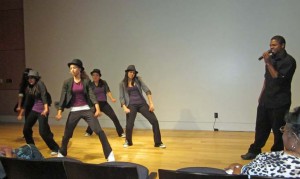
Dancers from Albuquerque’s Public Academy for the Performing Arts, accompanied by vocalist Josef Scott.
Poet Doris Fields shares a poem she wrote especially for the exhibition.
Clarence Fielder, a retired NMSU professor, who began the research for an exhibition about Las Cruces’ African Americans that, years later, grew into today’s version. His co-researcher, who couldn’t attend the event, was then-student Terry Moody, who today works for the state Historic Preservation Division.
Visitors enjoying the exhibition, which is in the museum’s second-floor Gathering Space.
The Gathering Space has plenty of comfy chairs, perfect for watching a 30-minute Colores program from KNME on Blackdom.

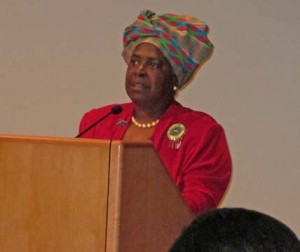
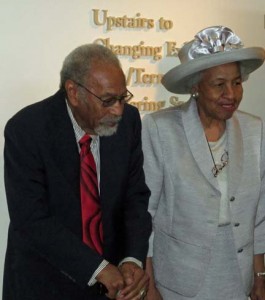
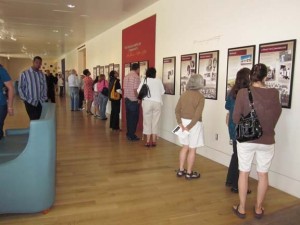
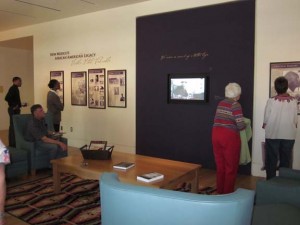
Pingback: NM History Museum News Blog » Blog Archive » Let Us Now Praise Doris Fields
I am searching for information regarding African Americans living in Roswell,New Mexico from 1944-1955. Do you have population data for that time period? If so, what part of town did they live? I was stationed at Walker Air Force Base from 1962-1966.
Pingback: New Mexico History Museum showcases our “Visible, Vital, Valuable” African American legacy | El Grito
Question: Has an African-American person ever won election to a statewide office in NM, including US Senate? If so, who and when? Thanks.
Jim, James B. Lewis has twice won election as the State Treasurer, which he currently holds.